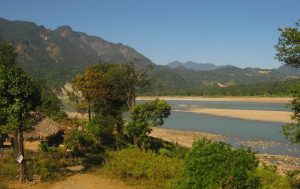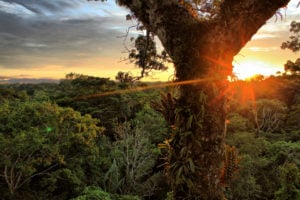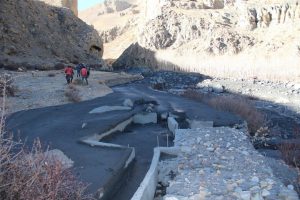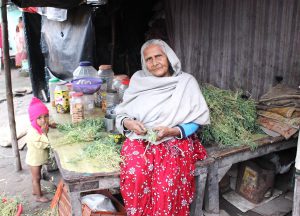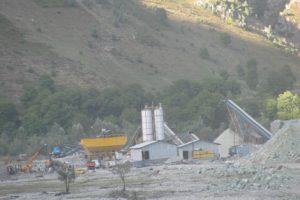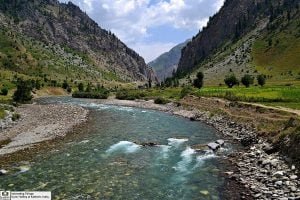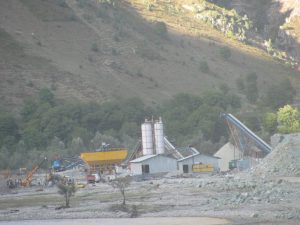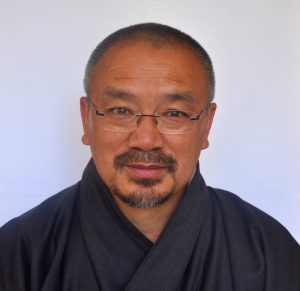There has been a shift in the way women are considered in climate change discussions. We are being urged to stop thinking of women as victims of climate change, but as a valuable resource, capable of contributing to local, national, regional and global efforts to counter climate change.
There is probably no better example of this than Christiana Figueres, the former Executive Secretary of the United Nations Framework Convention on Climate Change. “Empowerment of women strengthens climate action, we can make it a reality. Each member state must have gender-sensitive policies which are more effective in making sure that they focus on climate change mitigation and adaptation,’ she said during the recently concluded Bonn Climate Talks in May 2016.
However, there appears to be a huge disconnect between the ‘discussions’ on gender mainstreaming, and the actual inclusion of women as meaningful contributors in climate negotiations and conferences. Even by many of the so-called “mainstreamers”.
Of the 7 plenary sessions and 35 parallel sessions held at the Asia Pacific Climate Change Adaptation Forum (APAN), in Sri Lanka this week, the representation of South Asian women was woefully low.
One of the few women invited was Khrienuo Metha, Secretary to the state government of Nagaland in India. She was there for “gender representation”, one woman amongst 5 men during a high level plenary on Environment and Climate Authorities.
Her participation was upheld for its role in ‘gender balance’- perhaps more for the sake of maintaining this balance, rather than adding anything from her experience. In fact, I later learned from Metha that originally, “They had invited the chief minister of Nagaland”. But “because he could not come, he had requested his environment minister to come.”
Khrienuo Metha may not have been the only one only there by accident.
![Khrienuo Metha listens to a question on climate change at a high level plenary where she was the only female speaker [image by Farshad Usyan]](/wp-content/uploads/2016/10/apan2.jpg)
But it wasn’t that there were no women there. The stage was filled with women from other Asian countries. Japan for instance was fairly well represented; with women leading some sessions or being part of high level panels. But the same cannot be said for women from South Asia.
Hina Lotia, director of programmes at LEAD Pakistan, was one of the few women presenters from South Asia at the conference. I feel that it’s not that women are less in number; it’s just that they are not active in speaking up,” she pointed out. Looking around at the hall, she said, “It’s not about women as a symbol of gender mainstreaming. It’s also about men highlighting the vulnerabilities of women.”
The South Asian women sat and listened to women from developed countries, as they led session after session over the last 2 days. So why the drought of South Asian women? It’s not that female scientists and policymakers from this region are any less.
Is part of the problem is that there are no women on top positions in South Asian countries?
Looking back at the various climate change forums in the past, Lotia had observed a definite gender bias. “Policy makers and experts who we see at high level forums and plenaries today are those who have reached up the ladder over time. And we look 25-30 years back, women were less represented in this group,” she pointed out.
Harjeet Singh, from Action Aid India, said structural reasons may also be to blame for this. Whilst the sessions were ongoing, Singh, in response to a question on what the barriers to South Asian women’s participation in the conference could be, responded in a tweet:
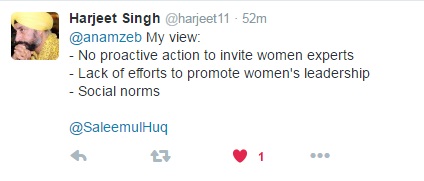
It is not enough to lament every time a forum on climate change comes up, that there are not enough women involved. Structural changes and socio-cultural norms may be difficult to change, but what can be changed is the way these forums are conceptualized. For now gender and female representation is more an ‘add on’ rather than as an integral part of inclusive climate debate.
This can only be countered if women start recognizing the need to put other promising women forward. In addition, for governments, conference organizers and the entire climate change community, promoting gender participation, particularly from countries whose women are facing the greatest challenges due to climate change should be given due consideration.
All is not lost, though if you ask Lotia. “People who lead research are invited as speakers. Women as principal investigators for research projects are a rare commodity. Now donors and funders are encouraging women lead research. Also, the number of women going into research and specialized degrees is also increasing. The challenge would be for these women to come into the workforce.”
And on the second day of the conference, Saleemul Haq tweeted this picture, showing improvement:
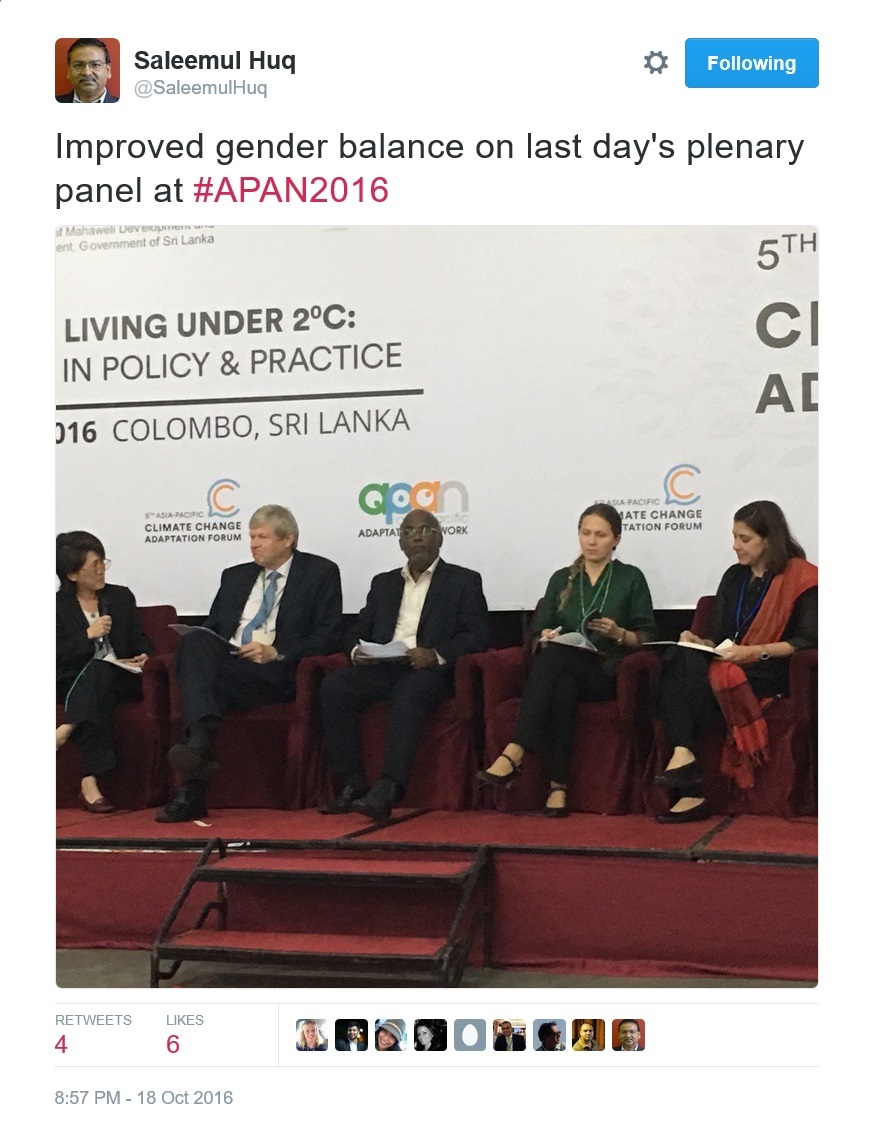
Originally published on 19 October 2016
![<p>Hina Lotia, LEAD Pakistan presents at a session on loss and damage [image by Farshad Usyan]</p>](https://dialogue.earth/content/uploads/2016/10/apan3.jpg)
